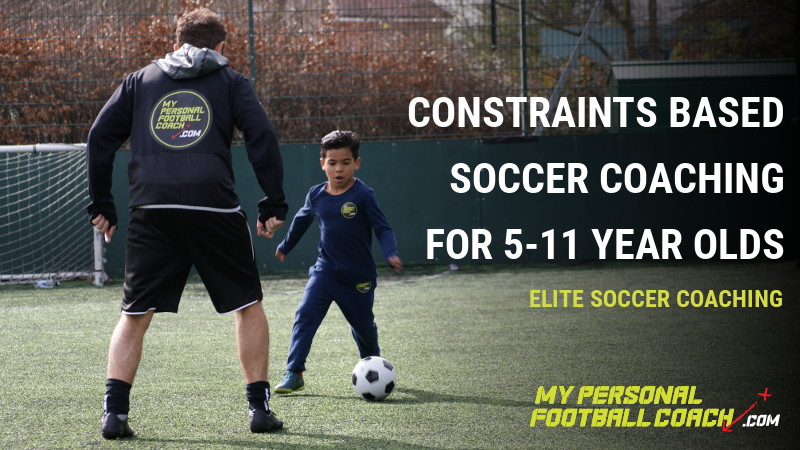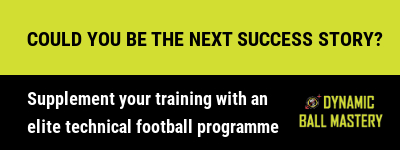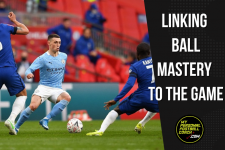
In these 5 years, my methodology had evolved as you would expect where these excellent courses have had a positive impact on my coaching as a team coach working in Premier League Academy football. One of the key elements that I wanted to focus on was the basic premise of having unfixed multiple outcome possibilities to improve decision making. Using this methodology with young players during sessions made perfect sense to me and is now firmly integrated in to my coaching practice but how do you get it to work effectively?
One size does not fit all?
Over the course duration there were many interesting speakers but there was one that struck a chord with me and created an interesting debate. A skill acquisition expert, often cited by the FA, talked about his research and findings where the emphasis was the need to train more in games. Ball Mastery and 1v1 are huge passions of mine so I asked him about his thoughts on these areas as thought this the ideal opportunity to get this “specialist’s” feedback on them. His answer was thought provoking:
- Ball Mastery is not being realistic to a game and had little benefit,
- Interestingly enough he also said 1v1,2v2s and 3v3s were of little benefit in comparisons to a real game, an ‘11v11’ game.
When asked whether players aged 5-11 would be better off playing 11v11 at a young age, he seemed to agree with this!
Ball Mastery is a key factor in elite player development and you can see in this article the numerous benefits it provides. This is where I think we have struggled to interpret the scientific data and what actually happens on the ground. I discussed this very point with a colleague of mine who is an academic and lecturer at a recognised university in London and also involved in a Cat 1 Academy. He said there was a disconnect between the research and what coaches are actually seeing on the training pitch. Now before I go on, I want to say that I am 100% in favour of more opposed game like practices in training. I feel though, as in every part of society, people have taken an idea and run it to an extreme leaving us in a position where coaches feel everything must be in a game.
This idea, in terms of a player development model, particularly in an elite environment in the foundation phase is a mistake where I feel the above model maybe more suitable for the Youth Development Phase (ages 12-16). We need to understand that this one size fits all approach to player development isn’t advisable and recognise the unique nature of the foundation phase. For a young player this is a time where we let them explore and develop creativity autonomously but also construct an environment that will stretch players technically, tactically, psychologically and physically.
With any idea, it is one thing to say it but how can you show it works. Below I aim to show my coaching justification for sometimes working outside of the game in the foundation phase and on occasions beyond that too.
1v1 opposed to 2v2, 3v3 or 4v4 practices
1v1 has for a long time been a key element in my training methodology, as has SSGs (small sided games), 2v2s, 3v3s, and 4v4s. I see a lot of coaches on social media talking about the negative outcomes of doing 1v1 opposed practices because there is not enough interference, so they prefer 1v1 outcomes in 3v3s, 4v4s or bigger formats.
This is the main point for me, forcing players to find their own solution out of a 1v1, or a 1v2 duel. Having to take ownership and responsibility, yes that’s right, ownership and responsibility. Having to develop strategies and importantly physical capabilities to be able to solve this problem.
Example of 1v1 Opposed Practice
Research suggest that when puberty hits it is a lot more difficult for children to develop new skills. (Lloyd & Oliver) so I argue it is exactly for this reason we focus so much on 1v1, (always in conjunction with other SSG formats) as we give players the opportunity to develop feints and movements that can beat players both ways. We can’t take this ability to stay on the ball under pressure for granted. If key balancing attributes aren’t developed at the early stages of development it may potentially effect a players ability to perform more complicated movement skills further on in their development. (Lloyd & Oliver) I have seen first hand how powerful it can be to young players to develop 1v1 domination techniques at the younger age groups in Academy football, I have also seen how much harder it is to develop these once players enter the youth development phase (12-16s).
I think there is a case that sometimes there are too many games in academy football training sessions especially in the foundation phase. By this I mean 7v7s and 9v9s. This format may encourage decision making but more often than not it is directed to team objectives directed to winning the game. Smaller formatted SSGs such as 4v4s would give much healthier street football type outcomes and foster creativity. It would also get more touches on the ball and 1v1 skills opportunities.
The Manchester United 4 v 4 pilot scheme showed that in comparison to an 8v8 game, players made 135% more passes, 260% more scoring attempts and scored 500% more goals. In addition, the number of 1 v 1 encounters between attackers and defenders increased by 225% while the number of 1v1 skills demonstrated by learners increased by 280%. Fenoglio, R. (2003). These figures clearly show the benefit of smaller sided games for younger players, particularly if we desire to develop players who can dominate 1v1 and stay on the ball.
Logic dictates that with 1v1 specific practices you would get even more repetition of technical, tactical and physical outcomes. Sports scientists may want us to do larger formatted games as mentioned above, but as specialists within this age group we see the technical benefits of smaller games formats. Here we may compromise ‘what the real game looks like’ to get the outcomes we want from our sessions that benefit our players.
Here is where as experienced practitioners we must use and interpret the research. Also when ‘specialists’ throw in your face ‘but where is the evidence’, myself I have seen it first hand spending 10 years in Academy football and seeing a full player development cycle, also look at the stats (fig1)
The most successful prolific academies in European football (CIES Observatory) focus on technical excellence at the young age groups. Ajax, Dinamo and Sporting, all academies, my colleagues and I have had first hand knowledge of promote this at the young age groups. This focus also includes lots of SSG’s , as all quality programmes do. Even for students.
Misconceptions in soccer coaching
“Even with considerable prior knowledge, strong guidance while learning is most often found to be equally effective as un- guided approaches. Not only is unguided instruction normally less effective; there is also evidence that it may have negative results when students acquire misconceptions or incomplete or disorganized knowledge”. (Kirschner, Sweller, Clark)
This idea of misconceptions is key and transferable to any setting. I’m in a fortunate position where I have worked in Academy football for 10 years and have also been an individual technical coach for 12 years with many success stories.
During this off season I have been working individually with a young Pro from a Premier League Club. During the sessions we were working on crossing which he identified as an area that he wanted to develop. As a forward wide player, this element was integral to his game and was causing him concern. When looking at his technique I simply suggested adapting his follow through once striking the ball. This made an immediate impact and the player then continued to explore and develop this, which not only helped his ability but also his confidence. This example is exactly the point of a coach, to spot the time that a player needs support and help and guide if necessary. I have heard some ‘experts’ talk about how players must be given the freedom to develop their own movement patterns and technique BUT the big problem with that assertion is what if they are unable too? In this case it could mean a pro ‘not getting another contract’ (his words not mine) or a player being released from an academy for being technically not good enough.
We need to support and develop our players when we are with them but also encourage players to work away from the game, inspire them to become independent learners and strive for technical excellence. Unopposed practices may not be the most efficient way of using your team training time, it’s imperative though we don’t scare our young aspiring elite players away from it as it’s an integral part of player development.
I regard myself as a technical coach and foundation phase specialist and I haven’t done a passing drill (a practice which involves a player passing from one cone to another and following) in a team session for over 5 years. Also I don’t impose pre conceived notions about what techniques should look like, or claim to be a ‘lord of the technique’ (more fallacies often regurgitated by the misinformed) it’s not about me it’s about them, the players, they are all better than me and can come up with much better solutions than I can. My role is purely to support and stretch when necessary.







